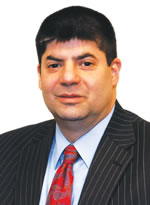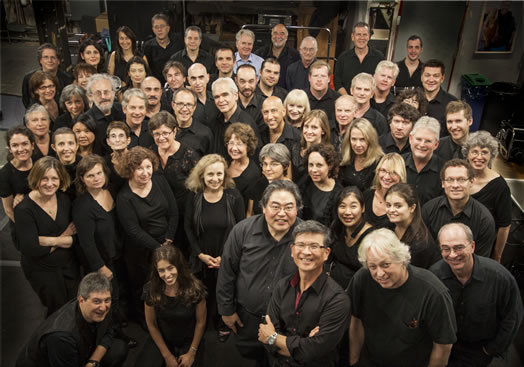Allegro
Stop the Invasion
How a recent law allows nonprofits to gut their endowments
Volume 114, No. 11November, 2014

Harvey Mars, Esq.
Harvey Mars is counsel to Local 802. Legal questions from members are welcome. E-mail them to HsmLaborLaw@HarveyMarsAttorney.com. Harvey Mars’s previous articles in this series are archived at www.HarveyMarsAttorney.com. (Click on “Publications & Articles” from the top menu.) Nothing here or in previous articles should be construed as formal legal advice given in the context of an attorney-client relationship.
Most major nonprofits rely on endowments to provide income. It is the very lifeblood that sustains them. Orchestras are no exception: very few of them rely solely on ticket sales to produce the revenue they need for operating expenses. Instead, it is their endowment that serves that function.
Well, one might ask, what is an endowment? How is it created? What legal protections exist to ensure that its principal is preserved? The answers to these questions are essential for us to explore in order to prevent the financial decline of cultural bastions like our major orchestras and operas. To take one painful example: the destruction of New York City Opera was directly attributable to the invasion of its endowment. In 2001, NYCO had an endowment of $51 million. However, by June 2013, its value had diminished to just $5.2 million due to its board’s decision to surreptitiously take from the endowment to cover its huge operating deficits.
The opera’s destruction was extensively charted in a New York Times article from Oct. 11, 2013 by James Stewart, entitled “A Ransacked Endowment at New York City Opera.” There it was noted that fiscal mismanagement was compounded by the New York Attorney General’s failure to thoroughly scrutinize NYCO’s court application to withdraw a substantial portion of its endowment. In the article, Jack B. Siegel, a well-known legal expert on nonprofits, said that “in my opinion, endowments should never be invaded.” This sage advice was not heeded.

Musicians of the New York City Opera take an intermission break during their final performance of “Anna Nicole” on Sept 28, 2013 at BAM. The opera’s endowment was invaded by its own board to cover its operating deficits, leading to the destruction of the company. Unfortunately, a recent law opens the door for orchestra and opera boards to repeat this move elsewhere. Photo: J. Thoma
Was the destruction of NYCO simply an aberration? Unfortunately, the current legal landscape renders it even more likely that something like this could happen again. Fiscal vigilance and oversight are not just a recommendation; they are now a mandate.
Under typical circumstances, an endowment is created when an individual, corporation or foundation donates a sum of money to a charity. The idea is that only the income should be spent while the principal is preserved. The endowment may be created by trust, will or other mechanism. For all intents and purposes, the principal – also called a “corpus” – is deemed “permanently restricted.” Donors can also place certain restrictions on an endowment so that its income can serve specific purposes.
For instance, the Lortel Foundation here in New York City has a trust fund that benefits Local 802’s Senior Musicians Association. The foundation helps underwrite the Senior Musicians’ annual concert at Carnegie Hall as well as an annual prize for an up-and-coming violin soloist.
Under normal circumstances, nonprofit boards are bound by the constraints established by the endowment’s creator. However, under the previous version of the nonprofit corporation law, a nonprofit board can ask a court for permission to withdraw principal from an endowment. Consent must first be obtained by the attorney general’s office. This happened twice at New York City Opera, once in 2008 and again in 2009. On both occasions, consent was freely given and the court acceded to the request.
However, on Sept. 17, 2010, the legal landscape changed for New York and almost every other state in the U.S. The New York State legislature enacted the New York Prudent Management Institutional Funds Act (NYPMIFA).
In a nutshell, this new law allowed nonprofits to dip into their endowments. In the past, if a nonprofit’s endowment was “underwater” (meaning it was worth less than it started with), the nonprofit wasn’t allowed to touch the principal at all. But the new law relaxed this rule and others.
Under the prior law, a nonprofit institution could only appropriate for expenditure so much of the net appreciation of an endowment fund as its governing board determined was prudent. However, the organization could not appropriate below the historic dollar value of an endowment fund without court approval unless the gift instrument permitted it. The NYPMIFA removes this restriction on appropriation below the dollar value of the endowment. There is an opt-out for donors whose donations were made prior to the effective date of the statute. Pursuant to the law, these donors are to be provided with written notification within 90 days permitting them to opt out of the law and requiring the board to abide by the prior statutory standard prohibiting invasion of principal. Failure to submit the opt-out defaults the donation to operation of the new statutory construct. In practical reality, how many donors have actually exercised this right? I would venture to guess few if any.
Under Section 553 of the nonprofit corporation law, gifts made to an endowment fund after the enactment of the new law, subject to donor intent, can be expended if the board determines in good faith that the expenditure is prudent and consistent with the purpose for which the endowment fund was created. An eight-factor test was also supplied in the statute to guide boards in their decision-making process. Finally, the law provides that expenditures of more than 7 percent of the fair market value of the endowment fund within one year will be presumed to be unwise. This presumption is a rebuttable one, and not one that in the first instance has to be demonstrated in court. Finally, it should be noted that while a donor has a legal right to relax restrictions on use of their donation, they have no legal standing to enforce these restrictions. Smithers v. St. Luke’s-Roosevelt Hospital Center, 281 A.D. 2d 127 (1st Dept. 2001).
It is obvious that the possible effect of the NYPMIFA is that more and more nonprofit boards can have virtually unfettered access to a substantial portion of their endowments without any legal oversight. This places a substantial but necessary burden on the public as well as the artists who are beneficiaries of these endowments to be vigilant and on guard to monitor use of donations and endowment funds. Further, nonprofit boards are duty-bound to ensure that that they are employing proper fiscal oversight standards. This is critical now, since the NYPMIFA, a law that was enacted to assist nonprofits in maintaining fiscal solvency, may actually have the opposite effect.
